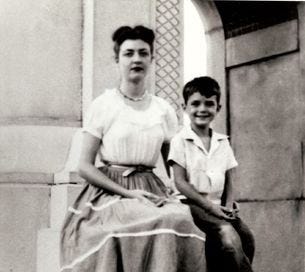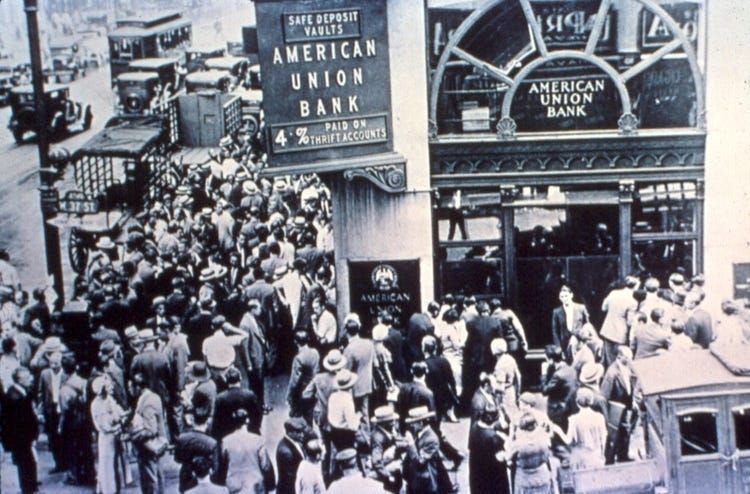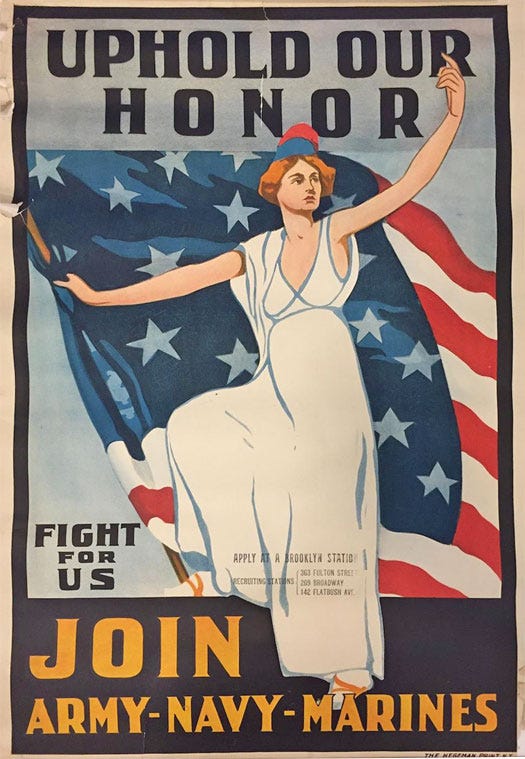Inspirational Entrepreneur: Bette Nesmith Graham
Abandoned as a single mom in the 1940s, she suffered a rough life then made millions painting over the mistakes of others.
Here’s an inspirational piece for Christmas week…
I could hide ‘neath the wings
Of the bluebird as she sings
— The Monkees
The story of Bette Nesmith Graham, the Bluebird Who Sang, is especially inspiring during the holiday season that inadvertently kicked off her career. Besides overcoming enormous hurdles this case demonstrates an ability to create a blue ocean business using no capital by finding and fixing painpoints in your personal life.
Disappointment Haunted All My Dreams
Born March 23, 1924 in Dallas, Texas, Bette Claire McMurray was five years old on October 29, 1929, when the New York Stock Exchange suffered a catastrophic crash. Billions of dollars in wealth vaporized at a time houses could be purchased for about $6,500 in New York or Boston and a whole lot less in San Antonio, where her family had moved to.
There was no deposit insurance and then, as now, banks invested deposits in the stock market. After banks took heavy market losses they’d run out of money and when a bank ran out of money depositors simply lost their money. As the market crash worsened depositors panicked and withdrew all their money. Long lines formed as ever-more depositors demanded their life savings in cash.
Bad investments coupled with panicked depositors caused the banks to run low on cash. As depositors demanded ever more cash the banks were forced to sell more stock. This pushed stock prices down fueling a cycle of ever-lower stock prices and ever-more bank runs.
Eventually, banks did run out of money and declare bankruptcy. Their savings squandered by others, individual people went from middle-class to destitute overnight. Additionally, businesses that relied on the bankrupt banks found themselves insolvent and were forced to fire their employees.
By 1933, when Bette reached double-digits in age, the US unemployment rate was a staggering 24.9% (a figure we’d never come close to until this year, April 2020, when it reached 24.5%). Unemployed, hungry, and miserable, Americans wandered aimlessly searching for work or at least food.
Steinbeck summed up the era when Bette came of age in The Grapes of Wrath:
“The families learned what rights must be observed—the right of privacy in the tent; the right to keep the past black hidden in the heart; the right to talk and to listen; the right to refuse help or to accept, to offer help or to decline it; the right of son to court and daughter to be courted; the right of the hungry to be fed; the rights of the pregnant and the sick to transcend all other rights.
John Steinbeck, The Grapes of Wrath (p. 194).
I Thought Love Was More or Less a Given Thing
In 1941, as a 17-year-old, Bette quit school to marry her high school sweetheart, Warren Nesmith, and work as a secretary. Not long after their nuptials, on December 7, 1941, the Imperial Japanese Navy launched a “dastardly and unprovoked” attack against the US fleet at Pearl Harbor killing 2,403 people and sinking 18 ships.
The US had been at peace, remaining neutral as the Axis allies of Japan, Nazi Germany, and Fascist Italy invaded country after country throughout the world. President Roosevelt declared it “a date that will live in infamy” and, as the US Congress debated whether to fight both Japan and Germany or only Japan, Hitler declared war on the US answering the question for them.
Americans of all ages flocked to the military recruiting stations but Warren, who’d soon finish high school, was the traditional age young men went to the army even absent a two-front war. Before leaving for training and Europe, he left his young bride something to remember him by, a child growing inside her. With Warren off fighting Nazis, Bette birthed R. Michael Nesmith on December 30, 1942.
After the war, Warren returned but had no interest in either the bride he’d left behind or the toddler she’d birthed. He abandoned the family and the couple divorced in 1946.
What’s the Use in Trying? All You Get Is Pain. When I Needed Sunshine I Got Rain.
Young single mothers weren’t all that unusual during this time though most were widows whose husbands died at war, not divorcees. Still, Bette was able to use her typing skills to secure a job as a secretary at a Texas Bank.
Bette wasn’t much of a typist but she was a fine artist and found a side hustle painting holiday murals in the windows of businesses, starting with her bank. As a typist, she’d make frequent mistakes and grew frustrated with the carbon-based ribbons that couldn’t be easily erased without smudging. Like all painters, she’d paint over mistakes rather than erase them. Why were typists erasing mistakes, or trying to erase them, rather than just painting over them, wondered the young mom.
Bette had found what we call in blue ocean terms a painpoint. Specifically, correcting typed mistakes was a common and expensive hassle nobody seemed to be addressing.
She tried painting over typed mistakes but regular paint dried slowly, didn’t adhere well to paper, and couldn’t be typed over. After a lifetime of struggle, Bette wasn’t one to give up early and experimented with different concoctions of chemicals at home in her kitchen blender. Eventually, she found a mix that worked well enough. She used it first on her own work then, soon after, suggested that other secretaries try her mixture.
I’m A Believer
It wasn’t long until secretaries from other businesses started offering to purchase bottles of her correcting fluid that Bette named Mistake Out. She’d mix, fill, and label nail polish bottles in her garage. Secretaries delivered feedback and she worked to iteratively improve her formula, eventually asking for and receiving help from her son’s chemistry teacher. As the company grew, she enlisted her teenage son Michael and his friends to help mix and distribute the material.
By 1958, Bette was still working her day job at the bank but mistakenly signed a letter “The Mistake Out Company.” They fired her for moonlighting. By then, her young company produced enough revenue for her to get by on. It also earned enough to patent the invention and trademark the product name. During that process, she chose to rebrand as “Liquid Paper.”
Sales boomed as orders flooded in from GE, IBM, and other big businesses. Her company relocated from her garage to a trailer, then a four-room house and, finally, traditional corporate headquarters in downtown Dallas. She built an automated manufacturing plant and, by 1975, was producing and selling 25 million bottles of Liquid Paper per year.
Despite powering through countless obstacles, life wasn’t through hurling curveballs at Bette. In 1962, she married frozen-food salesman Robert Graham. A control freak, he wrestled with her to control the business and sat on the Board of Directors. Graham and the Board banned Bette from the office and tried to change the formula to avoid paying her royalties. The couple had a blowout divorce in 1975.
Value extractors did what they usually do, sucking out the soul of businesses for personal gain. Eventually, Bette stepped back in to rescue it, as founders often do. She retook control and sold The Liquid Paper Company to Gillette in 1979 for $47.5 million plus royalties. Her bad luck wasn’t over and she died of a stroke a few months later, May 12, 1980.
Bette’s son, Michael Nesmith, born to an impoverished single mother, grew up to become a rockstar. Rather than live a life of leisure on his enormous family wealth he joined a four-person band, the Monkees, who had a few hit songs and also a television show. Later in life, he’d go on to fund movies and also produce an early hour-long music television show, Elephant Parts, that won the first Grammy awarded for Video of the Year.









